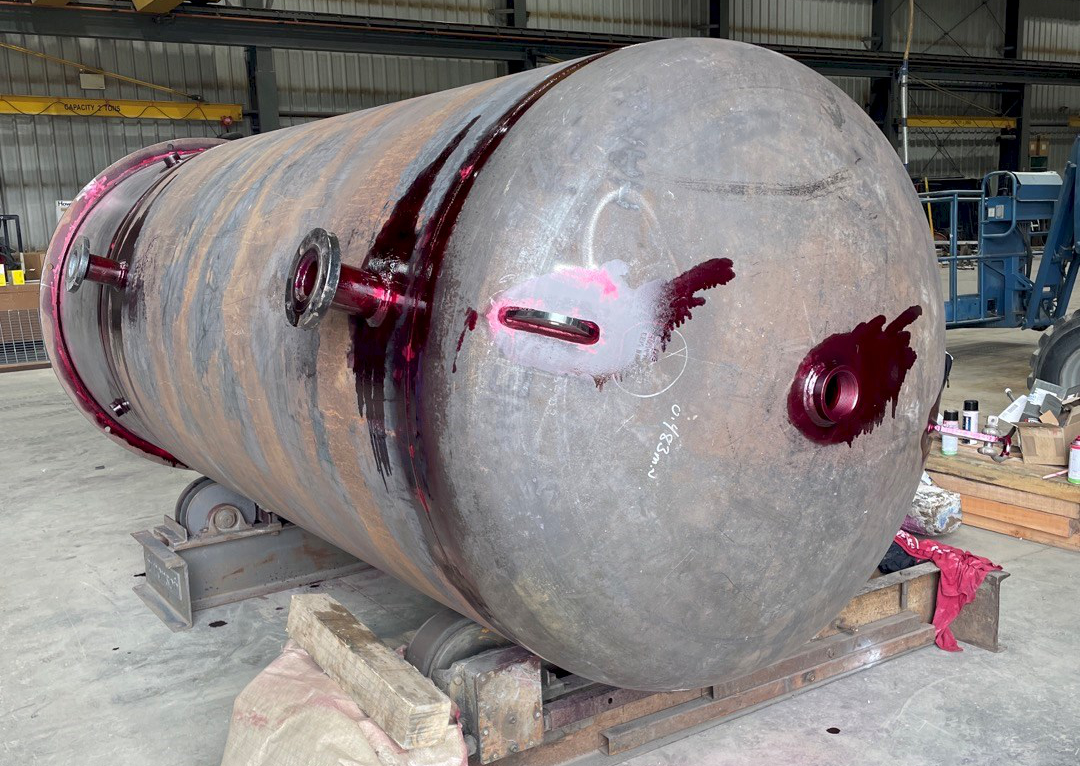The Significance of Expert Tank Welding Inspection Solutions
The Significance of Expert Tank Welding Inspection Solutions
Blog Article
The Essential Duty of Tank Welding Examination in Ensuring Structural Integrity and Safety Compliance in Industrial Applications
In the world of commercial applications, tank welding assessment arises as a pivotal aspect in guarding structural integrity and guaranteeing conformity with security regulations. Using a mix of techniques such as visual evaluations and progressed screening techniques, these assessments serve to determine and reduce prospective problems before they intensify right into considerable risks.
Relevance of Container Welding Assessment

Guaranteeing compliance with sector standards and laws is an additional substantial facet of storage tank welding inspection. Regulative bodies mandate stringent standards for the building and maintenance of storage space containers, and complete examinations help companies abide by these demands. Non-compliance can lead to serious penalties, including penalties and shutdowns, additionally highlighting the need for strenuous evaluation methods.
Additionally, storage tank welding assessment plays a vital duty in keeping operational effectiveness. In summary, the importance of tank welding examination lies in its ability to protect public health, protect the environment, and make certain compliance with regulative structures.
Secret Evaluation Strategies
Effective tank welding evaluation relies upon a range of essential techniques that ensure complete analysis of weld top quality and structural honesty. Among one of the most prevalent methods are aesthetic inspection, ultrasonic testing, radiographic screening, and magnetic bit testing - Tank Welding Inspection. Each technique uses one-of-a-kind benefits in examining various aspects of the weld
Visual inspection offers as the first line of defense, permitting assessors to identify surface flaws, abnormalities, or disparities in the weld grain. Ultrasonic screening utilizes high-frequency acoustic waves to find internal imperfections, such as fractures or gaps, supplying an extensive assessment of weld honesty. This approach is especially reliable in discovering concerns that might not be noticeable externally.
Radiographic testing uses X-rays or gamma rays to create pictures of the welds, disclosing interior suspensions and supplying an irreversible document for future recommendation. This method is highly reliable for crucial applications where the risk of failure have to be minimized.
Finally, magnetic fragment testing is employed to determine surface and near-surface issues in ferromagnetic products. By applying magnetic areas and great iron bits, examiners can determine gaps that could jeopardize the structural integrity of the storage tank. Together, these methods create a durable structure for making certain premium welds in industrial applications.
Compliance With Safety Standards

Regular assessments play a critical function in making certain conformity by determining potential failings or variances from prescribed standards. Examiners are educated to evaluate weld high quality, verify material specs, and evaluate the overall structural integrity of tanks. Their competence is important in making certain that welding processes fulfill the required safety and security criteria.
In addition, conformity with security criteria not only safeguards workers but likewise safeguards the atmosphere from potential threats such as leaks or devastating failings. Organizations that focus on security compliance are better positioned to mitigate threats, improve functional effectiveness, and promote a culture of safety within their workforce. In recap, preserving rigorous conformity with security criteria is essential for the successful procedure of storage tank welding tasks in commercial settings.
Benefits of Routine Assessments
Normal assessments are indispensable to maintaining the architectural honesty and safety of welded storage tanks. These examinations provide an organized strategy to identifying potential defects or weak points in the welds, making sure that any type of problems are attended to before they escalate into substantial failures. By conducting routine evaluations, organizations can identify corrosion, fatigue, and various other forms of degeneration that may endanger tank efficiency.
Furthermore, consistent evaluations add to conformity with industry policies and standards. Complying with these guidelines not only alleviates lawful dangers but additionally boosts the organization's reputation for safety and security and integrity. Routine inspections promote a proactive safety culture, encouraging employees to identify and prioritize the importance of tools honesty.

Study and Real-World Applications
Study and real-world applications illustrate the concrete effect of efficient storage tank welding inspection practices. One notable example is a big petrochemical facility that dealt with significant functional interruptions as a result of leaks in tank. Adhering to the execution of strenuous welding examination protocols, consisting of aesthetic and ultrasonic testing, the center determined crucial flaws in weld joints that can have resulted in devastating failings. This aggressive approach not only stopped ecological hazards but also conserved the company millions in prospective clean-up prices and regulative fines.
In a similar way, a water therapy plant executed a comprehensive assessment program for its container welding operations - Tank Welding Inspection. By integrating non-destructive testing techniques, the plant was able to find early indicators of deterioration and exhaustion in weld joints. This prompt treatment prolonged the life-span of the storage tanks and ensured conformity with safety and security regulations, thus securing public health
These study underscore the significance of regular and methodical tank welding inspections. go to this web-site By prioritizing these practices, markets can minimize threats, improve architectural honesty, and guarantee conformity with safety and security standards, eventually leading to boosted operational performance and lowered liabilities.

Final Thought
In conclusion, tank welding evaluation is an essential element of preserving architectural stability and look at here security in commercial applications. Employing various evaluation techniques makes sure early detection of possible defects, thus preventing disastrous failures.
Report this page